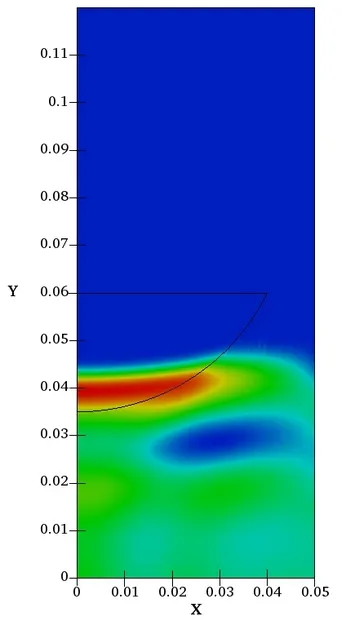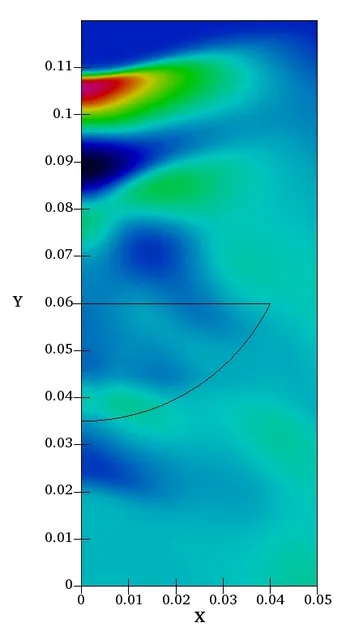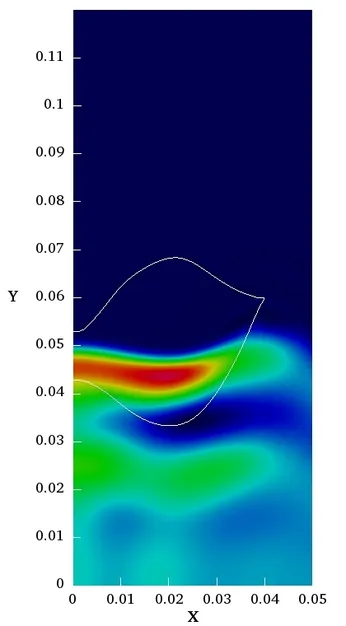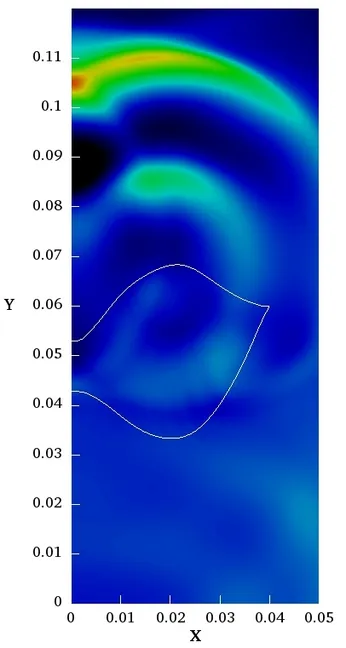Shape optimization
We are currently looking at shape optimization problems with applications for designing future ultrasound devices, electric motors, and skyscrapers. In the latter two applications, uncertainty quantification is also a significant focus.
Problem setting and motivation
Efficient focusing of sound waves based on shape optimization
Focusing in ultrasound applications is achieved geometrically, with lenses or spherical focusing arrays of piezoelectric transducers. Such setups can naturally benefit from shape optimization: we can find the shape of the lens or the transducer surface which results in a desired pressure distribution around the focal point.
Modern skyscrapers must be designed to satisfy specific serviceability and failure criteria. Beginning from an architectural CAD model, we seek to find the nearest geometry which satisfies these criteria. With research on risk-averse optimization we contribute, e.g., to the ExaQUte project. The ExaQUte Pfeil project aims at constructing a framework to enable Uncertainty Quantification (UQ) and Optimization Under Uncertainties (OUU) in complex engineering problems using computational simulations on Exascale systems. See more on this topic from our collaborators in the Chair of Structural Analysis here.

Similar to the curved transducer geometry from above, focusing of an ultra-sound wave can be reached by sending the wave through an acoustic focusing lens. Such behaviour can be observed in the next picture where the cross-section of a (nonlinear) wave can be seen developing steepening as well as being focused towards the axis of symmetry:



The shape of the acoustic focusing lens plays a crucial role in trying to achieve precise focusing. Different shapes might exhibit different focusing properties. Finding an optimal shape is subject to our work in shape optimization. The following picture shows optimization results using linear and quadratic NURBS (isogeometric analysis framework) together with an initial configuration.
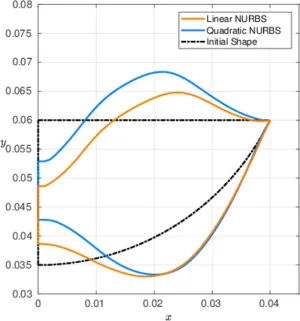
The effect of the optimized lens can be observed in the following comparison of acoustic pressure distributions between the initial (left) and optimized (right) shape
